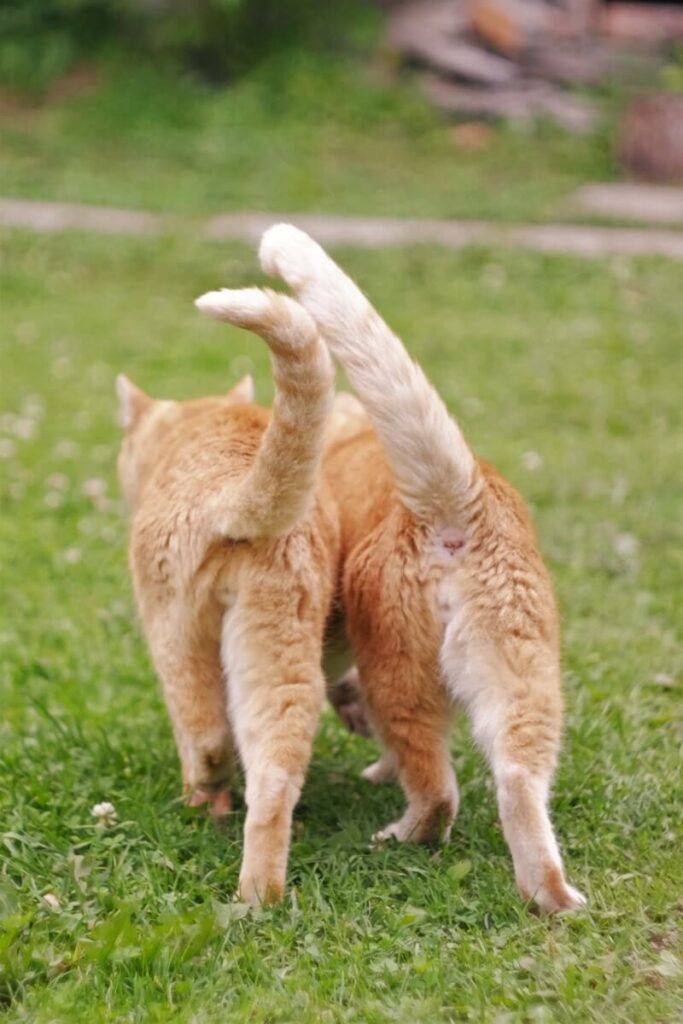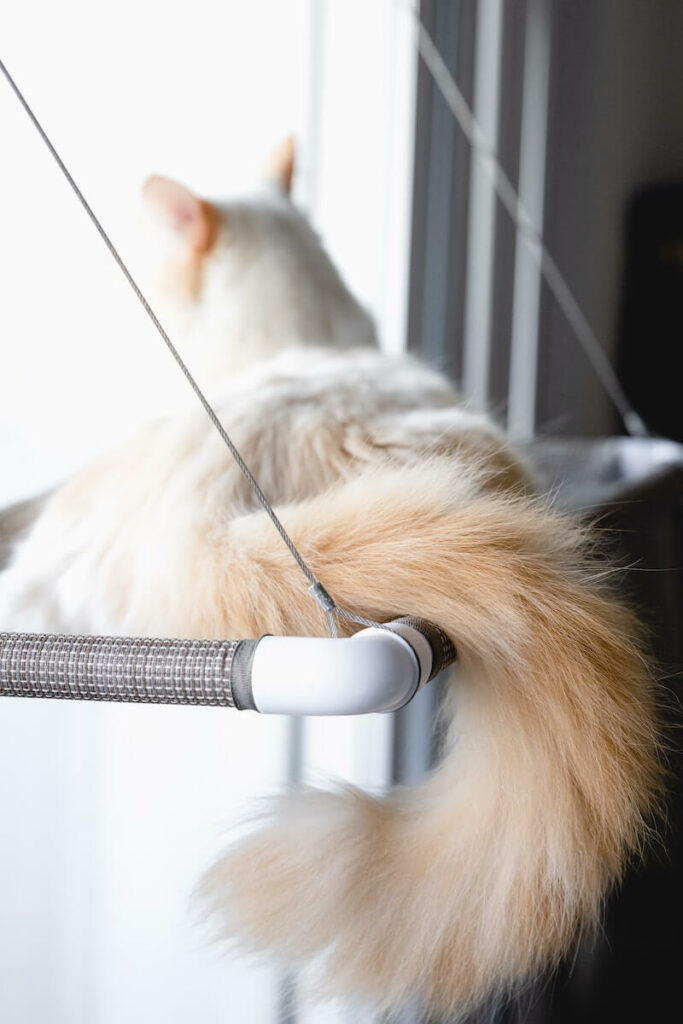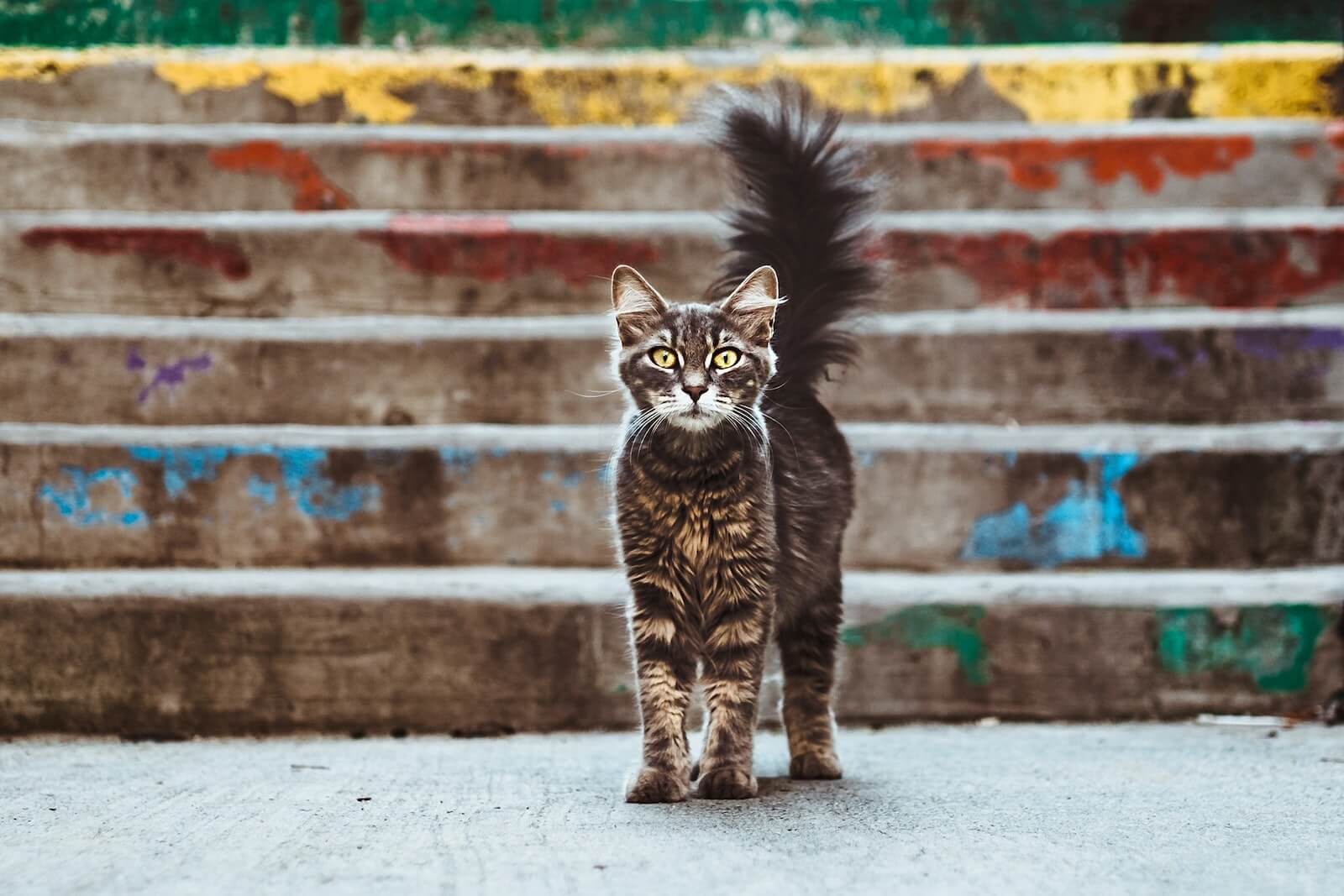Have you ever wondered where the phrase “cats always land on their feet” comes from? Is it a fact or just a famous saying? The answer is fascinating because we could say that cats land on their feet almost 100% of the time, but do you know why? Maybe they have a secret ability they don’t want to share with us, or perhaps it’s thanks to their wise nature that gave them fantastic anatomy?
I won’t keep you waiting any longer. The answer to the cats’ best-kept secret is their tail! Yes, a cat’s tail isn’t just an adorable ornament they chase or wag when they’re happy. It’s a super important part of their body that helps them with many things. Amazing, isn’t it? If you want to know why cats have tails and what they use them for, I invite you to keep reading this article.
Why do cats have tails?
Cat tails serve multiple purposes. However, here are the 4 main reasons explained:
1. For balance
Cats have incredible balance. Have you noticed how they run, jump and walk through high or tiny spaces and don’t fall? It looks like magic, but their secret weapon is their tail which works as a counterweight. That’s right, imagine an acrobat walking on a rope suspended high above. Have you seen how they always have their arms stretched out to the sides to balance their weight? Well, that’s what a cat’s tail does.
2 For amazing landings
A cat’s tail gives it a sense of direction that helps it always land on its feet. No matter how many pirouettes it does in the air, the tail tells the cat if it is upside down, allowing it to turn its body in time to land on its paws. Similarly, when a cat jumps, the tail points down, and when a cat turns in the air to the right, the tail points to the left, and vice versa, the tail functions as a counterweight and an excellent compass.
3. To gather information
A cat’s tail has many nerve endings that help it better understand its environment, giving it information that lets it know whether it is in a safe place or not. For example, they often use their tail to touch surfaces to determine if they are stable, comfortable, rough, etc.
4. For communication
All furballs communicate with us, and it’s just a matter of understanding their complex body language to know what they want to say. The most common forms of cat communication are meowing, purring when you pet them, ear position, tail position, and movements.

Meaning of the tail position
- Tail up: It means the cat is happy! If she swings it, it is a way of affectionately saying hello.
- Sitting with the tail curled around the body: This posture signifies that the cat is at ease and feels calm.
- Low tail: If your cat has a low tail, she is sad. The sadder she is, the lower her tail will be.
- Stiff tail: Something has caught her attention, and she is a bit tense. She is expectant.
- Stiff tail to one side: It indicates curiosity. Your cat is exploring and trying to discover something.
- Tail bristling and down: This is a sign of fear or submission.
- Stiff tail wagging sideways: Your cat is showing discontent or anger about something, be careful.
- Stiff and bristly tail: The cat is furious and is a way to intimidate. If the tail is bristly but arched, it’s ready to attack. You should leave the room and give it time to calm down. Never try to touch it or carry it.
Meaning of tail movements
- Very subtle movements: This is unusual, but if she moves her tail gently and once or twice, it means she is happy.
- Slow and gentle movements: She is feeling calm or trying to concentrate on something, perhaps her next prey.
- Fast and agitated movements: This is a sign of aggressiveness; she is preparing to attack.
- Side-to-side movements: Even if you think otherwise, the cat is angry, so you better stay away.
- Rapid tail tip movements: This movement can also mean that the cat is angry, anxious, or excited, although it is also common to see it when they are hunting and concentrating on their prey.

Why do some cats have no tails?
If the tail is so important for cats, how come some breeds like the Bobtail or the Manx are born with no tail or a tiny one?
The cause of a cat being born without a tail is a genetic mutation that may be present in an entire breed, or, sometimes, this variation is only current in one or two cats in a litter that is born with tails. Fortunately for these cats, their bodies adapt perfectly to this difference and generally don’t show any problems in their development. They run, jump and pirouette like agile long-tailed cats.
These cats have two crucial differences that help them compensate for the lack of a limb: their vestibular system is more developed, and the muscles of their hind limbs are larger than those of their front limbs, so they control their body balance without the need for a tail.
Most common cat tail injuries
- Tail breakage: The cat’s tail is composed of vertebrae, muscles, ligaments, and tendons, so, like any other bone, the tail can also break if stepped on or caught in a door.
- Tail-pulling injury: If the cat’s tail is pulled hard, it can detach from the base, separating from the spine.
Both injuries are severe and can cause significant problems such as incontinence, lack of coordination, and inability to walk, feel or hold the tail erect. You must go to the veterinarian in case of an accident, and preferably it’s always best to avoid touching the tail of cats, as they don’t like it because of how sensitive it can be.
Why do cats have tails? The bottom line
There you have it. Now you know more about why cats have tails, what they use them for, and how important they are to felines. So the next time you see your cat wagging her tail, you’ll know exactly what she’s trying to say. Let us know in the comments if you have questions about your cat’s tail or if there’s anything we missed. And don’t forget to share this article with other cat lovers!
